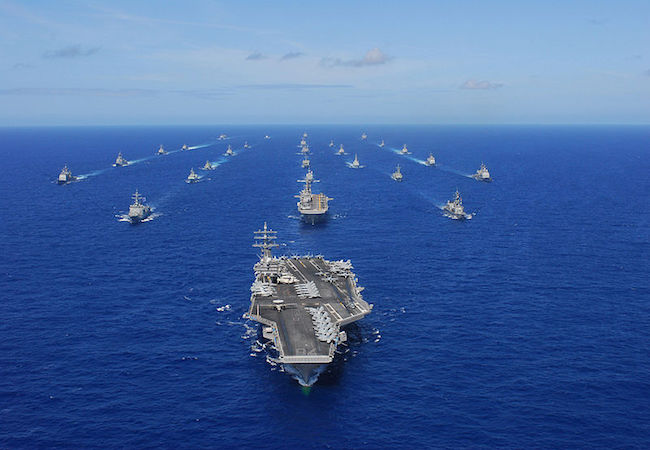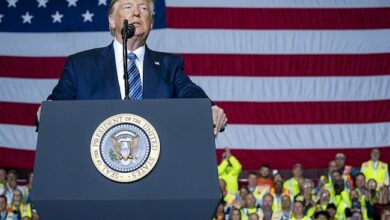
By Srimal Fernando and Megha Gupta
The U.S. foreign policy has led to a relatively prolonged stretch of international engagements with the South Asian nations. In the recent years, the new U.S. foreign policy towards South Asia has ushered a change, describing Asia as “Indo-Pacific” instead of “Asia Pacific”. This change has been introduced to increase the connectedness between the two continents Asia and Africa further with the littoral states along the Pacific Ocean. The U.S. foreign policy expectations from the South Asian countries comprises of increased leadership and management as well as the establishment of rule of law and free market economy in the region.
The U.S. diplomacy with the Indian subcontinent and its neighbors over the last seven decades has changed considerably. This nature of involvement of the U.S. with the South Asian nations has varied with time as the U.S. national interest has gone through different stages of evolution. It has been over a year since the President Donald Trump has taken the office and his Foreign Policy goals aim at prioritizing the American Security Interests globally under the “America First Policy”. In a speech at the United Nations, President Trump had further backed this claim by stating “As long as I hold this office, I will defend America’s interests above all else.”
The current administration’s stance with regard to Afghanistan and few other South Asian nations has not been very different from the previous administration. Even though in the election campaign, President Trump was a critic of the war in Afghanistan, but under the new foreign policy the U.S. interests in Afghanistan has been extended as a long term strategy. This interest is not only limited to the security aspect of the South Asian region but it rather also extends to the economic aspect to cover Central Asia because of the rich minerals, oil and other resources available in this region. Within this subcontinent, the President Trump like the former Presidency of Obama is also concerned about the safe-havens provided to terrorists in Pakistan and Afghanistan and believes in taking a staunch action against international terrorism being pursued in these countries. Further to ensure security and stability of South Asia, the U.S has a base in Diego Garcia located close to the Maldives to counter the Chinese influence in the Indian Ocean.
The former U.S. Secretary of State and the 2016 Democratic party candidate Hillary Clinton in her visit to Chennai in 2011 had stated that “The time has come for India to lead. Much of the history of the 21st century will be written in Asia which, in turn, will be influenced by the partnership between the US and India and its relationship with neighbours.”After seven years the U.S. making India its strategic ally in the Indo-Pacific displays the reliance of U.S. on India as a leading player in the Asian region. It can also be seen through India’s growing position in the multilateral forums like South Asian Association of Regional Cooperation (SAARC), Bay of Bengal Initiative for Multi-Sectoral Technical and Economic Cooperation (BIMSTEC), Brazil, Russia, India, China, South Africa (BRICS) and the Indian Ocean Rim Association (IORA) and its powerful observer status in the Association of Southeast Asian Nations (ASEAN) to counterbalance China’s influence in the Indo-Pacific.
U.S. comprises of around 4.3 million South Asians and a large proportion of them consists of Indians, Pakistanis and Bangladeshis. The stiffening of the H1B visa’s processing procedures which has been a cause of concern to the South Asian countries where a large number of highly skilled workers and students are aspiring to enroll in U.S. educational institutions.
The external policies of the U.S. massively get influenced by the domestic political scenarios. In the 2016 presidential election the main candidates of the Democratic party and the Republican party had the campaign slogans such as “Stronger together” and “Make America Great Again” respectively, thereby both reiterating on strengthening the domestic policies whilst addressing the South Asian issues. The Democratic party during the tenure of Bill Clinton and Barack Obama had a stronger position in engaging with the South Asian countries like India. Former President Clinton had revived the India-US relationship by supporting the India-US Civil Nuclear Agreement and during the President Obama’s tenure the bilateral trade between India and the U.S had hoped to multiply by five-fold to around $500 billion by 2020. The former Republican President Bush had further enacted on the Indo-US Nuclear Deal in 2005. Under the current administration the new U.S. foreign policy is also strategically aligning with India through the Indo-Pacific policy to counterbalance the influence of other powers in this region.
For the South Asian countries, it becomes important for them to understand the U.S. domestic party politics as it strongly reflects on the foreign policy decisions of the U.S. Hence it is important for the South Asian countries to reassess their own foreign policy agendas to realign with that of U.S. foreign policy goals in the Indo-Asia-Pacific. On the other hand, U.S. also needs to take into considerations the socio, political and economic factors of these South Asian countries, when they frame their U.S foreign policy mandate.
Srimal Fernando a research scholar at Jindal School of International Affairs, India and an editor of Diplomatic Society for South Africa and Megha Gupta, a scholar with Master’s in Diplomacy, Law, Business at Jindal School of International Affairs, India.




